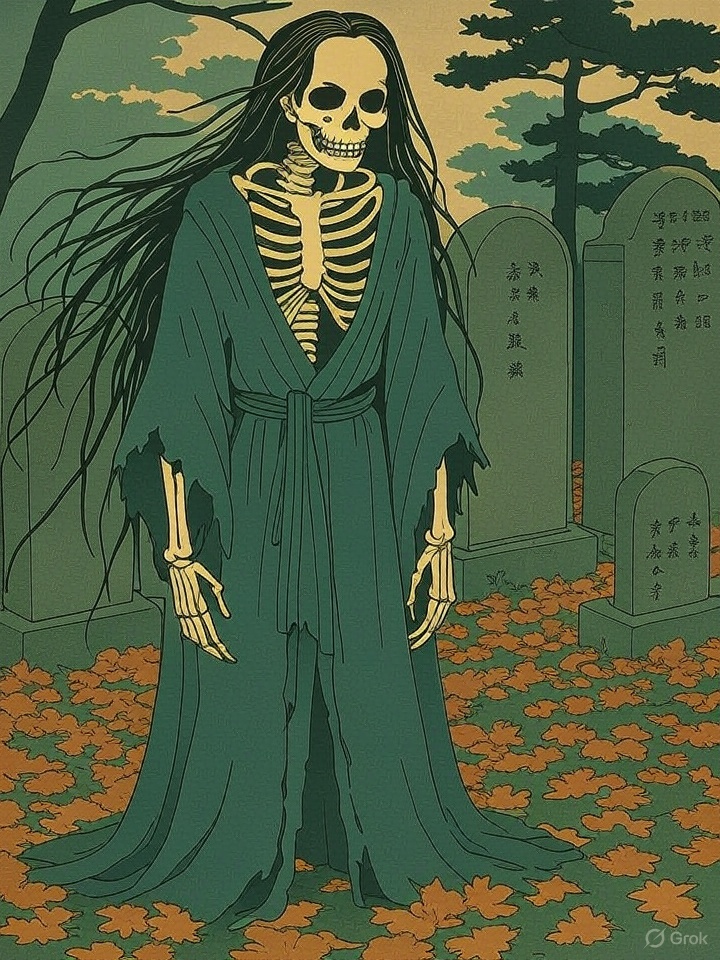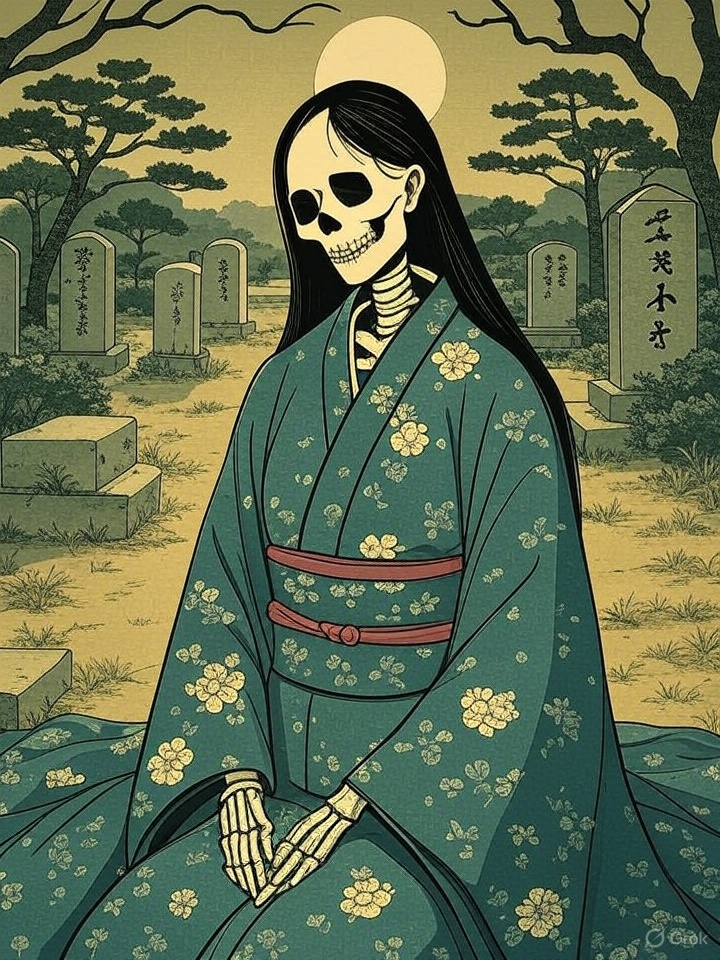Name Meaning
Overview
\n
Hone-onna (骨女) translates directly to "bone woman" and is a spectral yokai who disguises herself as a beautiful woman but is actually a walking skeleton.
- Hone (骨) = bone
- Onna (女) = woman
Origin
- Popular in Edo period ghost stories and woodblock prints.
- Appears in the famous yokai collection Konjaku Hyakki Shūi by Toriyama Sekien.
- Often tied to tragic romances and lingering spirits of devotion.
Appearance
- Appears as a beautiful, ethereal woman under moonlight.
- Her true form is revealed in mirrors or upon close inspection: a skeleton clad in rotting kimono.
- Sometimes shown with only her face remaining youthful while the rest is bones.
Behavior & Myths
- Visits the home of a former lover night after night.
- The man, under her spell, sees her as young and beautiful.
- Her presence slowly drains his life until he withers away.
Symbolism
- Symbol of love beyond death and the dangers of clinging to the past.
- Represents beauty as an illusion and the inevitability of death.
- Used in moral tales to warn against obsession and spiritual blindness.



